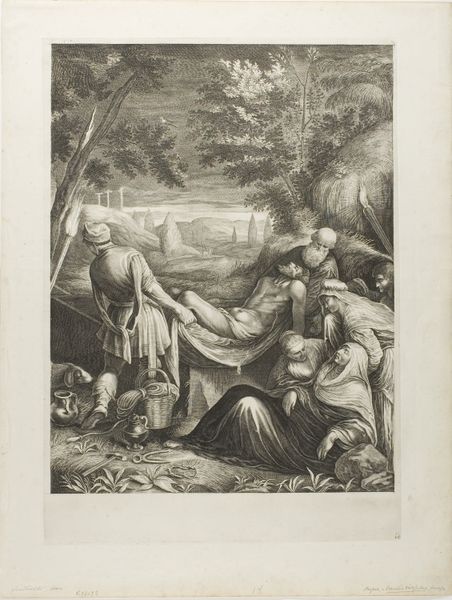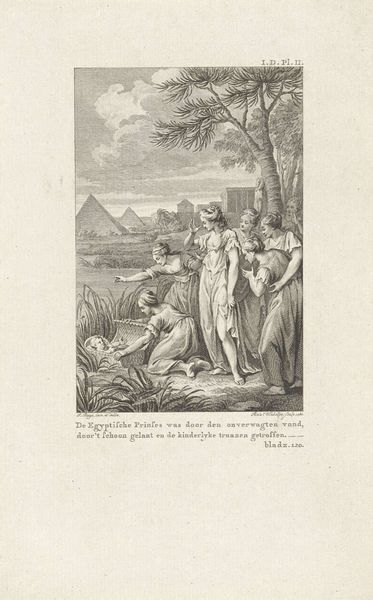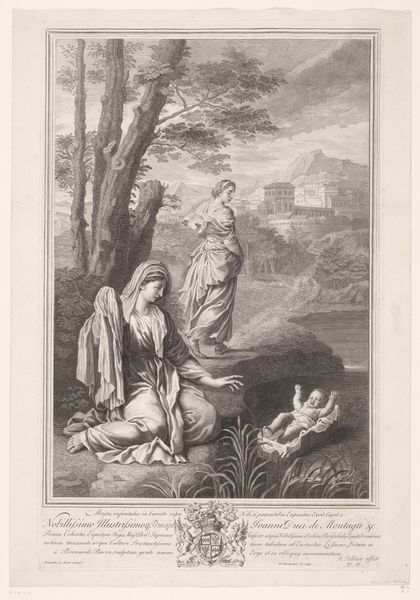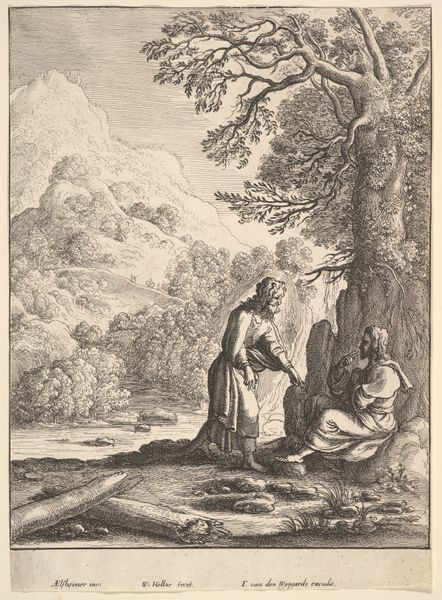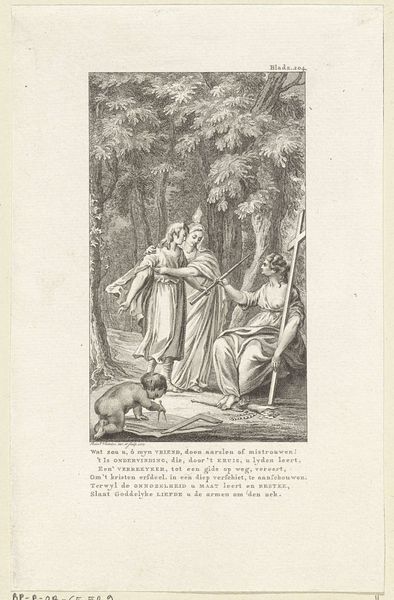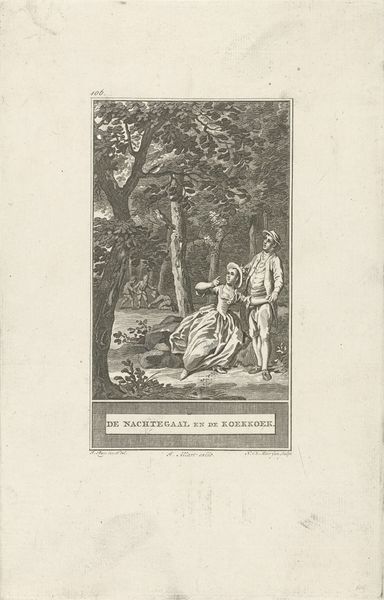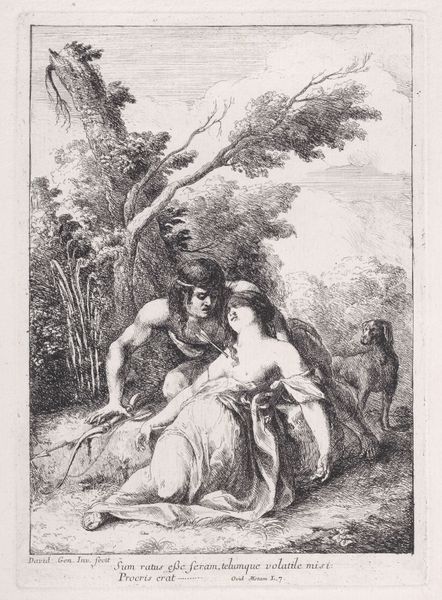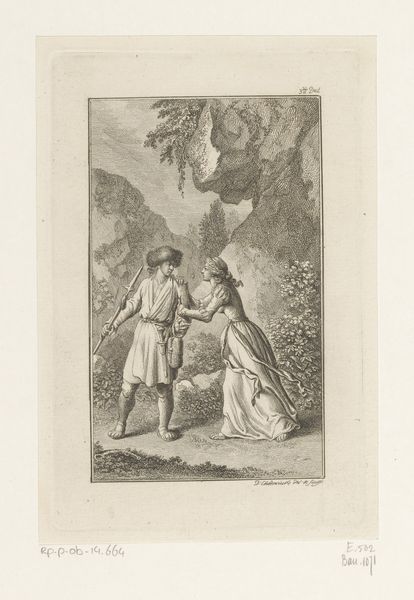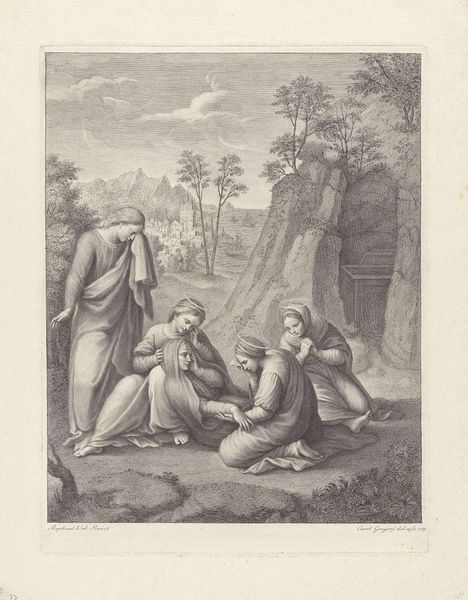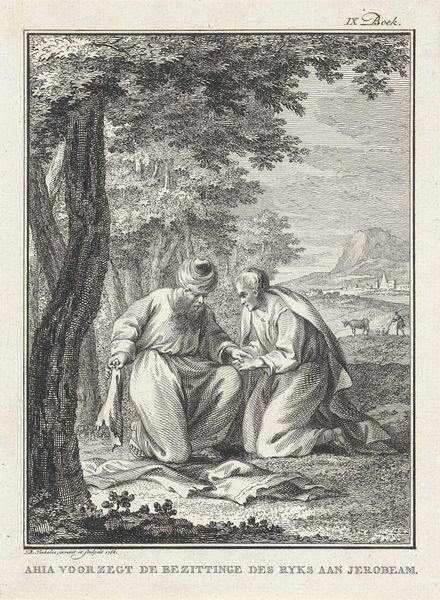
drawing, print, paper, engraving
#
drawing
#
neoclacissism
#
aged paper
#
narrative-art
# print
#
old engraving style
#
landscape
#
classical-realism
#
figuration
#
paper
#
line
#
history-painting
#
engraving
Dimensions: height 99 mm, width 73 mm
Copyright: Rijks Museum: Open Domain
Curator: Here we have Philippus Velijn's 1820 engraving, “Farao's dochter vindt Mozes in het biezen mandje,” which translates to "Pharaoh's Daughter Finds Moses in the Basket." The fine lines of this piece are just stunning. Editor: The mood is undeniably serene. The delicate landscape backdrop lends this small vignette of discovery an enormous weight. It hints at momentous futures, wouldn’t you agree? Curator: Absolutely. Engravings like this often served to reinforce prevailing cultural and religious narratives. The story of Moses resonates even now with a longing for freedom and divine intervention in the face of oppression. The discovery of a child becomes, symbolically, the hope for a nation’s future. Editor: Which also speaks volumes to Velijn’s approach here; he’s employing neoclassical ideals to portray biblical narrative. How can the social hierarchies present in this time—evident from the three figures who've uncovered the babe in his woven crib—play out within a system that would subjugate people such as Moses' family and lineage? Curator: The very act of Pharaoh’s daughter defying her father’s orders has resonance, and aligns beautifully to how visual symbols carry psychological impact across generations. Think of the reed basket, for example; a simple object, yet fraught with meanings of vulnerability, hope, and deliverance. Editor: True! It’s as if the materiality, too—the paper itself and the lines etched into it—echo the fragility of life and the permanence of story. Looking at the light, delicate application of lines brings this to life in a whole new perspective that calls attention to these struggles in more modern interpretations. Curator: It’s amazing how Velijn uses simple lines to convey profound human experiences and their emotional, cultural, and psychological impacts. Editor: I think understanding Velijn's engraving—in the context of its creation and reception—allows us to see how deeply entrenched those patriarchal narratives are. Curator: Yes, an image with remarkable complexity and lasting appeal across time, despite being an ostensibly simple piece of devotional art. Editor: I'd love to consider how later art engaged with the more challenging social commentaries raised by artworks like this.
Comments
No comments
Be the first to comment and join the conversation on the ultimate creative platform.
